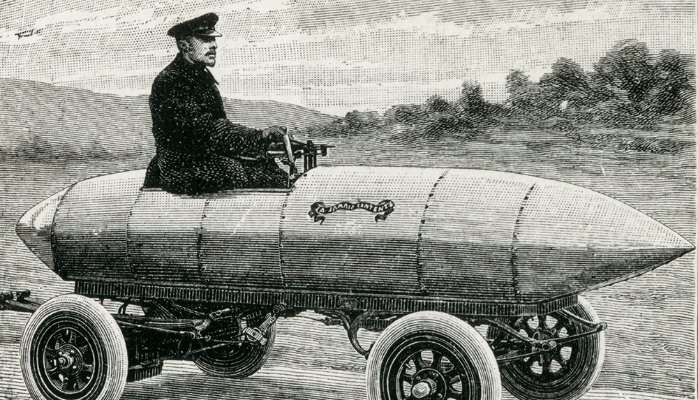
La Jamais Contente
In Achères Yvelines, France, the 17th of January 1899 would not be a regular Tuesday. Camille Jenatzy, a Belgian car racer, would become the first man to break the 100km/h barrier. Jenatzy would make it to 105.9km/h (65.8mph) piloting La Jamais Contente, a light alloy torpedo-shaped car.
An electric car.
This would be the last time that an electric vehicle would ever own the land speed record. Thanks to a number of technological developments, which climaxed with the mass production of fossil fuel vehicles by the hand of Henry Ford in 1913, the internal combustion engine became the most convenient and economically viable option. It became the industry standard, for race and passenger cars, a status it would never lose again. Not until now, at least.
Over the years, several attempts to resurrect the electric vehicles were launched and eventually failed. However, the recent alignment of environmental, economic and technological factors is finally beginning to position the electric car as a real option.
Elon Musk, the CEO of Tesla Motors, recently stated that 200 miles would be the minimum driving range for an electric car to be a viable option. This predicament was substantiated by the California Center for Sustainable Energy which, in 2013, determined that 70% of consumers would be happy with an electric car with such a range, but only 9% would settle for 100 miles.
And so began the race for the 200-mile range electric car. One one side, the defiant Tesla Motors which, with two top of the range models to its name, just announced, with great fanfare, their foray into the mass market with the Model 3, a car with a range of 215 miles and a price tag of $35 thousand. On the other side, the industry mammoths, which now appear seriously committed to winning the race — Chevrolet, for example, started 2016 by announcing the Bolt, a small 5-seater hatchback, with the so sought-after 200-mile range, priced at $30 thousand.
These can be the first truly disruptive steps in an industry largely dominated by decades of incremental innovations. And the victory of the electric car will be achieved when, in a few years, the tailpipe becomes frowned upon.
But other disruptions may be on the way. Several companies, both in the tech and in the automotive industries, speak openly about the self-driving car. One company in particular, though, appears to have flown directly over this conversation: EHang, a Chinese startup founded in 2014, recently unveiled its prototype of a drone capable of flying one person for 23 minutes with a single touch on a tablet.
It’s hard to anticipate everything that technology can bring to mobility, but these recent news are growing our appetites for the extraordinary innovations that will come in the next few years.
Originally written as an op-ed for the February edition of Forbes magazine (Portuguese edition). This is a translated and updated version, after the launch of the Model 3 by Tesla Motors.
Business Developer | Sales | Ecommerce | Events | FMCG | Media | Digital
8ySem dúvida que o futuro passará por aqu. Parabéns por ter feito o mesmo em Portugal na Uber